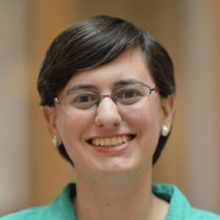One of the newest additions to the collections of the Kislak Center for Special Collections, Rare Books, and Manuscripts also happens to be the oldest printed book in the Penn Libraries. The 48th volume of the Daihannya haramitta-kyō (also known as Mahāprajñāpāramitā sūtra, or the Sūtra of Perfection of Wisdom), is a tall, narrow book, folded accordion-style, its classical Chinese characters copied onto the page by precise, detailed block prints. When a Buddhist monastery in Japan created this devotional text in 1410, Europe was still a few decades away from using book-printing technology. Block printing would not be employed to make books until 1423, and it would be almost 30 years before Gutenberg’s movable type made its debut.
“In the past, whenever we at the Kislak Center talk about the history of printing, we gesture towards East Asia, but we focus on Europe,” admits senior curator for special collections Mitch Fraas. Having a book like this in the collection fundamentally changes how the Libraries can talk to students about history, decentering Europe in a way that is still rare when discussing the history of the book. “Exposing people to intellectual and printing traditions far beyond the ones the special collections libraries in the United States have been most comfortable with for years is huge.”
“It fundamentally changes everything we can do,” agrees Julie Nelson Davis, professor of Art History. The (literally!) slim volume documents a nugget of history that is significant to people across the University. Davis and Libraries staff expect that it will be useful to faculty, students, and outside researchers interested in Japanese studies, East Asian languages and history, the history of the book, art and art history, and more. “Our colleagues in religious studies are going to love this!” Davis adds.
It’s not only the remarkable history of this book, but the opportunity for it to be used in so many different ways that drove the Kislak Center to purchase it. “I’m always pouring over Jonathan Hill’s Buddhism-related listings,” recounts Japanese Studies librarian Rebecca Mendelson, referring to the catalogs the Libraries regularly receives from a bookseller and Penn alum who specializes in Japanese, Chinese, and Korean illustrated books, manuscripts, and scrolls. “So I was just thrilled when Lynne [Farrington, senior curator of special collections] approached me with the possibility of acquiring this.”
What happens after one of our librarians finds a rare book, manuscript, or other unique collections item that sparks their interest? For the Penn Libraries, making the decision to purchase a rare book is incredibly collaborative, requiring discussions among librarians, subject matter experts, faculty, and booksellers. Staff often speak to faculty members from a variety of academic areas to find out how they would use a new acquisition in their teaching and research. “We try to figure out, is there any interest in this work and does it fit in our collection?” says Farrington. “How could it be used? What kind of research value does it have?” Cost plays a role in this process as well. "With items that are more expensive, we'll do more outreach to make sure there is consensus around their acquisition."
It’s thanks in part to an unrestricted donation from Jay Penske that the Libraries was able to purchase Daihannya haramitta-kyō. Fraas notes, “Gifts like this enable us to make purchases of this kind quickly.”
A book of this kind provides a unique sensorial experience that allows faculty and staff to take students on a journey back in time. “This is a living object,” that places the viewer in the 15th century monastery where it originated, says Davis. A monk or nun would have set the book in front of him or her and chanted the sutra aloud. That’s what makes its accordion shape so important--it was much easier for worshippers to turn the pages as they went, instead of awkwardly unrolling a scroll. Looking at the book, it’s easy to imagine the hundreds, maybe thousands, of times someone turned the delicate pages.
Other, more atmospheric, hints about the life of the book remain buried in its pages. “When it was used, incense would have been burnt all around it,” Davis explains. “And it still exudes the scent of incense.”
It’s details like this that make Davis, Mendelson, Farrington, and others so excited to share this book with students. Penn faculty often point out that the Libraries makes special collections regularly available to students, giving them once-in-a-lifetime experiences to get up close and personal with unique items like this one. “Students really respond to seeing the real thing,” says Davis. "They spend so much time in this weird screen world and textbook world, and then they come into the library, and you can put this in front of them.” In a moment when so many of us have been living our lives through screens, cut off from tactile experiences, there is something particularly remarkable about seeing a 600-year-old book with your own eyes, to smell the scent gathered over time, and maybe even turn its pages, as so many hands have in centuries past.
As Davis succinctly puts it, “You can almost feel the history with the book in your hand.”

One of the newest additions to our collections also happens to be the oldest printed book in the Penn Libraries.
